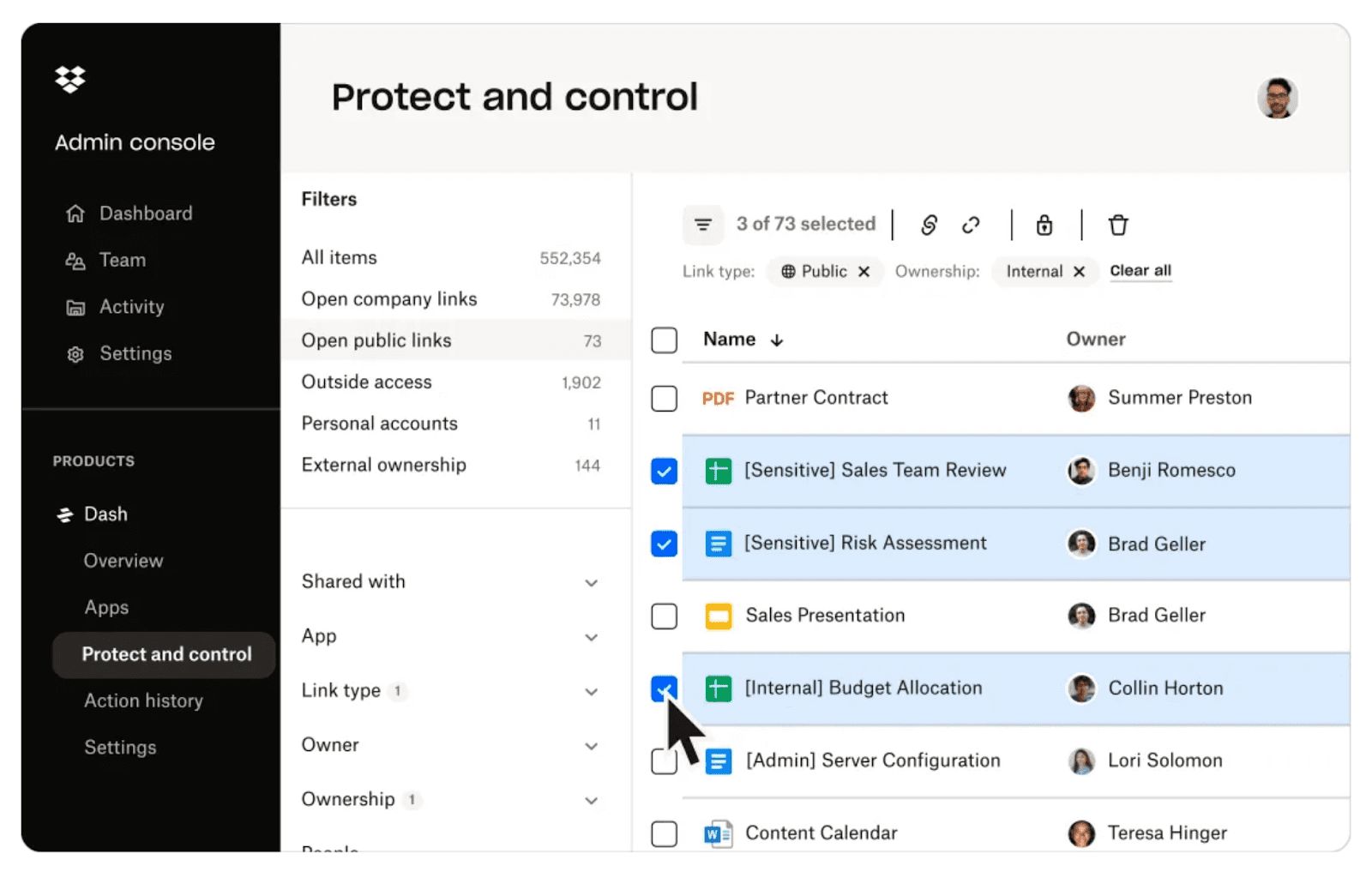With more people working remotely or in hybrid setups, relying on traditional methods such as cumbersome email chains or disconnected applications no longer meets the demands of modern teamwork. Understanding cloud based collaboration tools means recognizing how they empower teams to overcome the limitations of physical distance and traditional software. The shift toward digital workplaces demands solutions that not only connect people but also streamline workflows and reduce friction across diverse work environments.
This guide will walk you through everything you need to know—from what cloud collaboration actually is, its benefits and drawbacks, and top cloud collaboration platforms to consider in 2025.
What is cloud collaboration?
Cloud collaboration is a way for teams to work together using internet technology that connects people in a shared digital space. Instead of exchanging files through emails or working separately, cloud collaboration enables everyone involved to access and update the same information instantly from anywhere.
Key aspects of cloud collaboration include:
Shared virtual workspace: Teams use platforms that host projects, documents, and conversations in one online location. These cloud based collaboration tools are dynamically updated so that changes are visible to everyone in real time.
Simultaneous editing: Multiple collaborators can work on the same file at once, which reduces delays caused by version conflicts or waiting for updates.
Continuous connectivity: Team members stay connected via chat, video calls, or comments embedded in work files—blurring the lines between communication and task completion.
Decentralized access: Unlike traditional office setups or locally stored files, cloud collaboration removes geographical barriers by allowing access via internet-enabled devices anywhere and anytime.
Streamlined workflows: Automatic syncing and centralized organization reduce manual steps, accelerating project progress while improving accuracy.
Cloud collaboration doesn’t refer solely to the tools used, but more importantly to the collaborative process itself enabled by cloud computing. This change reflects the broader shift toward digital transformation, supporting more flexible work styles and faster innovation cycles.
By embracing cloud collaboration, teams move beyond isolated efforts to a truly connected, transparent, and responsive way of working—making projects more efficient and engagement stronger.
Benefits and drawbacks of cloud based collaboration tools
Cloud based collaboration tools have fundamentally changed the way teams work, offering many advantages but also presenting some challenges. Understanding these benefits and drawbacks helps organizations choose and implement the right tools effectively.
Benefits
Improved accessibility and flexibility: Since cloud platforms are internet-based, team members can access files and collaborate anytime, anywhere, on any device. This flexibility supports remote work and hybrid models effortlessly.
Enhanced transparency: Cloud collaboration tools often feature activity tracking, comments, and notifications that allow teams to stay informed and accountable.
Cost efficiency: Cloud solutions reduce the need for extensive on-premises infrastructure and maintenance, enabling scalable usage aligned with business growth.
Faster decision-making: Instant access to up-to-date information and communication channels accelerates approvals and problem-solving.
Supports innovation: By breaking down barriers and enabling cross-functional teamwork, cloud collaboration fuels creative solutions and faster iteration.
Drawbacks
Dependence on internet connectivity: Reliable internet access is a must. Poor connections can disrupt communication and delay tasks.
Security and privacy concerns: While many platforms have strong protections, cloud storage always carries some risk. Businesses must ensure chosen tools comply with security standards.
Learning curve and adoption challenges: Switching to cloud based collaboration tools can pose adoption hurdles, requiring training and adjustment to new workflows.
Overload and distraction: With constant notifications and multiple communication channels, users can easily feel overwhelmed or distracted if tools aren’t managed well.
Integration complexities: Some organizations struggle to unify cloud collaboration tools with legacy systems, limiting seamless workflow automation.
Despite these drawbacks, the advantages often outweigh the challenges when cloud collaboration is implemented thoughtfully with clear policies and user training.
Top 10 digital workplaces for cloud based collaboration
Here is a curated list of 10 best cloud collaboration tools widely recognized for enhancing teamwork and productivity:
Lark: Best for all-in-one team collaboration and communication
Zoom: Best for high-quality video conferencing and webinars
Asana: Best for task and project management teams
Trello: Best for visual project tracking with boards and cards
Dropbox Business: Best for secure cloud file storage and sharing
Notion: Best for customizable all-in-one workspace and notes
Basecamp: Best for simple project management and team communication
Wrike: Best for customizable workflows and enterprise project tracking
Confluence: Best for team knowledge sharing and documentation
Smartsheet: Best for spreadsheet-style project and workflow management
1. Lark
Lark is a modern, all-in-one cloud based collaboration software designed to unify communication, project management, and document collaboration in a single platform.
Developed with cloud technology at its core, Lark empowers teams to work simultaneously on shared documents, communicate instantly, and automate workflows without toggling between multiple disconnected applications. This integration helps reduce friction in teamwork, fosters transparency, and accelerates decision-making. Lark has rapidly gained traction among startups, SMBs, and enterprises aiming for enhanced productivity, simplified operations, and enhanced employee engagement.
Key features
Real-time collaboration on cloud documents and sheets: Lark’s cloud based collaborative database and documents allow multiple team members to work on files simultaneously.
Integrated messaging and video conferencing: Blending chat, threaded comments, and HD video conferencing into one app eliminates the need for separate communication tools.
Smart calendar and scheduling tools: Lark includes intelligent calendar features that sync with your work and collaboration apps, helping teams schedule meetings effectively and avoiding conflicts.
Automated workflow management: Beyond simple automation, Lark supports complex automated workflows that help teams streamline processes such as task assignments, approval chains, and notification triggers.
Secure cloud storage with permission management: Lark provides secure, encrypted cloud storage for files and documents. Admins can set precise permission levels controlling who can view, edit, or share content, which is crucial for safeguarding sensitive data.
Cross-platform accessibility and offline access: Lark runs smoothly on desktop, web browsers, and mobile devices.Its offline functionality lets teams keep working even without internet connectivity — syncing changes once back online.
Free plan: includes 11 powerful products, supporting up to 20 users, 100 GB storage, 1,000 automation runs and unlimited AI translation in chats, docs and email.
Paid plans: Pro plan starts at $12/user/month, Enterprise plan is customized according to your needs.
2. Zoom

Image source: zoom.com
Zoom is a leading cloud based collaboration platform best known for its high-quality video conferencing and communication solutions. Its virtual meetings have become a staple in the business and education sectors worldwide, thanks to a simple interface, reliable performance, and the ability to scale from small team meetings to large webinars. Beyond meetings, Zoom integrates chat, phone, and conference room hardware into a unified cloud environment, making it a versatile choice for remote teams.
Key features
HD video and audio conferencing: Cloud hosting ensures smooth, stable video and audio quality worldwide, supporting one-on-one calls up to large group meetings or live webinars.
Screen sharing and recording: Instantly share your screen or applications for collaborative discussions, and record sessions in the cloud to review or share later.
Integrated chat and messaging: Persistent chat rooms and direct messages keep communication flowing between meetings.
Cross-device access: Participate or host meetings from desktop apps, browsers, and mobile devices, with seamless syncing and cloud backup.
Virtual backgrounds and meeting controls: Cloud-powered features enhance user experience with virtual backgrounds, waiting rooms, breakout rooms, and moderation tools.
Third-party integrations: Works well with calendar apps, project management tools, and CRM platforms, leveraging API capabilities to build connected workflows.
Pricing
Free plan
Pro plan: starts at $13.33/user/month
Business plan: start at $18.33/user/month
3. Asana

Image source: asana.com
Asana is a cloud based project and task management application designed to help teams organize work, track progress, and collaborate effectively. Its clean interface and customizable workflows let users visualize project timelines, assign responsibilities, and monitor deadlines from anywhere, making it a popular choice for teams adopting cloud collaboration for project execution.
Key features
Task and project tracking: All tasks and projects are stored in the cloud, enabling real-time updates and visibility for all team members.
Multiple project views: Choose from list, board, calendar, or timeline views to suit your team’s workflow.
Collaboration with comments and file attachments: Integrated chat and file uploads keep communication and documentation centralized.
Automation of routine work: Use rules and triggers to automate task assignments, status updates, and notifications, reducing manual effort.
Mobile and desktop apps: Cloud sync keeps task lists and updates consistent across devices, supporting flexible work environments.
Integrations: Connect with tools like Slack, Google Drive, and Microsoft Teams to streamline information flow across apps.
Pricing
Personal plan: Free
Starter plan: $10.99/user/month
Advanced plan: $24.99/user/month
4. Trello

Image source: trello.com
Trello is a cloud based visual collaboration platform that uses boards, lists, and cards to help teams organize projects and workflows easily. Its simple drag-and-drop interface and flexible card system make it ideal for managing tasks, brainstorming, and agile project management in a visually intuitive way. Being cloud based, Trello allows teams to collaborate in real time from anywhere.
Key features
Visual task organization: Boards and cards represent tasks and projects, enabling simple drag-and-drop prioritization and workflow management.
Customizable workflows with Power-Ups: Extend Trello’s functionality with integrations and automation like calendars, time tracking, and reminders.
Mobile and desktop apps: Work seamlessly across devices with cloud synchronization.
Activity and notification tracking: Stay informed about task progress, comments, and due dates through in-app and email notifications.
File attachments and collaboration: Add files from your computer or cloud storage services directly to cards for centralized documentation.
Pricing
Free plan
Standard plan: starts at $5/user/month
Premium plan: starts at $10/user/month
Enterprise plan: starts at $17.50/user/month
5. Dropbox Business

Image source: dropbox.com
Dropbox Business is a cloud-based file storage and collaboration platform designed for teams needing secure, scalable, and easy-to-use file sharing. With a strong reputation for reliable syncing and sharing across devices, Dropbox Business supports workflows ranging from simple document access to complex enterprise content management. Its cloud foundation eliminates dependency on physical storage and enables secure collaboration anywhere.
Key features
Cloud file storage and syncing: Automatically sync files across devices with real-time updates accessible from anywhere.
Advanced sharing controls: Granular permissions let admins and users control access with view, edit, and sharing rights.
File versioning and recovery: Restore previous versions or accidentally deleted files through cloud backups.
Collaboration tools: Integrates with Microsoft Office and Google Workspace for real-time document editing and commenting.
Smart Sync: Makes files appear local without taking storage space, thanks to cloud hosting.
Security and compliance: Enterprise-grade encryption, two-factor authentication, and regulatory compliance ensure data safety.
Third-party integrations: Works seamlessly with Slack, Zoom, Salesforce, and many others to fit into existing workflows.
Pricing
Plus plan: starts at $9.99/user/month
Professional plan: starts at $16.58/user/month
Standard plan: starts at $10/user/month
Advanced plan: starts at $24/user/month
6. Notion

Image source: notion.com
Notion provides versatile cloud collaboration services that combine note-taking, knowledge management and task management into one integrated platform. Teams use Notion to centralize documents, workflows, and project plans in customizable pages, promoting transparency and alignment. Its cloud architecture enables seamless simultaneous editing and easy access on any device.
Key features
Flexible content types: Allows embedding text, tables, databases, kanban boards, calendars, code snippets, and more all in one place.
Template ecosystem: Offers a large library of customizable templates for project management, documentation, CRM, and more.
Cross-platform access: Available on web, desktop, and mobile, with cloud sync ensuring consistent data everywhere.
Integrated task and project tracking: Combines note-taking with task lists, reminders, and deadlines.
Granular permission controls: Share pages selectively with teams, individuals, or publicly with read or edit rights.
Rich media embedding: Supports images, videos, bookmarks, PDFs, and other media in workspace pages.
Pricing
Free plan
Plus plan: starts at $10/user/month
Business plan: starts at $20/user/month
Enterprise plan: custom pricing
7. Basecamp

Image source: basecamp.com
Basecamp is a cloud-based project management and team collaboration platform that emphasizes simplicity and clarity. It helps teams organize communication, tasks, files, and schedules in a single accessible environment. Basecamp’s focus on straightforward collaboration makes it a popular choice for small to medium companies and creative agencies embracing remote or hybrid work.
Key features
Centralized file storage: Store and organize documents, images, and files safely in the cloud for easy access.
Automatic check-ins: Tools for asking recurring questions and gathering team updates automatically.
Simple user interface: Minimal learning curve thanks to intuitive cloud-based navigation and organization.
Client access: Share selected projects or files with clients with controlled permission levels.
Mobile and desktop apps: Accessible across devices with always up-to-date cloud syncing.
Pricing
Free plan
Plus plan: starts at $15/user/month
Pro unlimited plan: starts at $299/user/month
8. Wrike

Image source: wrike.com
Wrike is a powerful cloud-based project management and collaboration platform tailored for diverse teams and enterprises to manage projects, resources, and complex workflows efficiently. Its cloud foundation enables dynamic real-time updates, customizable dashboards, and integration with multiple business tools, facilitating seamless coordination regardless of team size or location.
Key features
Custom workflows and automation: Build tailored workflows with automation rules to reduce manual effort and speed up processes.
Advanced reporting and analytics: Visual dashboards and customizable reports provide actionable insights powered by live cloud data.
Document collaboration: Create, edit, and share documents within Wrike with version control—all stored securely in the cloud.
Resource management: Allocate workloads and track capacity dynamically using live cloud-based data.
Robust integrations: Connect seamlessly with popular tools like Salesforce, Slack, Microsoft Teams, Google Workspace, and more.
Enterprise-grade security: Data encryption, single sign-on (SSO), and advanced permission controls maintain compliance and privacy.
Pricing
Free plan
Team plan: starts at $10/user/month
Business plan: starts at $25/user/month
Enterprise plan: custom pricing
Pinnacle plan: custom pricing
9. Confluence

Image source: atlassian.com
Confluence, developed by Atlassian, is a cloud-based team collaboration platform focused on knowledge sharing, documentation, and content management. It serves as a centralized wiki where teams create, organize, and update content collaboratively, making it ideal for project documentation, meeting notes, and internal knowledge bases.
Key features
Collaborative editing: Multiple users edit documents simultaneously with instant cloud syncing, which enables teams to manage projects and data effectively.
Page and space organization: Hierarchical structuring of pages and spaces helps keep information orderly and searchable.
Templates and macros: Pre-built templates and customizable macros accelerate content creation and enhance functionality.
Integration with Jira and other tools: Seamlessly link work from Jira or other Atlassian products for end-to-end project tracking.
Access anywhere: Cloud hosting enables team members to contribute, edit, and find information from any device or location.
Permissions and security: Granular control over content visibility and editing rights ensures secure collaboration.
Version history and rollback: Track changes and restore historical versions directly from the cloud interface.
Pricing
Free plan
Standard plan: starts at $5.16/user/month
Premium plan: starts at $9.73/user/month
Enterprise plan: custom pricing
10. Smartsheet

Image source: smartsheet.com
Smartsheet is a cloud-based platform that combines project management, workflow automation, and collaboration with a familiar spreadsheet-like interface. It empowers teams to plan, track, automate, and report on work collaboratively in real time, bridging traditional spreadsheets’ flexibility with strong project and resource management capabilities.
Key features
Spreadsheet-style interface: Intuitive grid view helps users manage projects and data with familiar controls.
Real-time collaboration: Cloud syncing provides immediate updates across stakeholders and teams.
Automation workflows: Streamline repetitive tasks with rule-based triggers and notifications.
Multiple views: Switch between grid, Gantt, calendar, card, and form views for flexible work perspectives.
Resource management and reporting: Track resource allocation and project status with dynamic, up-to-date dashboards.
Robust integrations: Connect with tools like Microsoft Teams, Salesforce, Slack, and Google Workspace.
Enterprise security: Cloud-hosted with SOC 2 type II compliance, data encryption, and access controls.
Pricing
Pro plan: starts at $9/user/month
Business plan: starts at $19/user/month
Enterprise plan: custom pricing
Frequently asked questions
What makes cloud based collaboration tools different from traditional software?
Cloud-based tools operate on remote servers and deliver services over the internet, allowing users to collaborate in real-time from anywhere with no need for complex installations or hardware. This flexibility makes them ideal for remote and hybrid teams.
How secure is my data on cloud collaboration platforms?
Most reputable cloud collaboration providers implement robust security measures like data encryption, multi-factor authentication, and compliance with international standards. However, it’s important to understand each provider’s policies and choose one that aligns with your organization's security requirements.
Can cloud collaboration tools integrate with existing software?
Absolutely. Integration capabilities are one of the biggest strengths of cloud collaboration tools. They often connect seamlessly with popular apps like email clients, project management software, CRMs, and productivity suites, creating a streamlined work environment.
What features should I prioritize when selecting a cloud collaboration platform?
Look for real-time document editing, chat and video communication features, file sharing with permission controls, task and project management tools, automation options, cross-platform accessibility, and a user-friendly interface.
Are cloud collaboration tools suitable for large enterprises?
Yes. Many cloud collaboration solutions offer scalable plans tailored to large organizations, including advanced admin controls, security compliance, and premium support options to accommodate enterprise requirements.
Conclusion
Cloud based collaboration tools are no longer optional—they’re essential for businesses that want to thrive in an increasingly digital and remote-working world. The key benefits of these tools include enhancing productivity and reducing operational friction by bringing teams together regardless of geographic location, synchronizing work in real-time, and automating repetitive processes.
Among the many options today, Lark stands out as an all-in-one cloud collaboration platform that truly supports modern teams’ evolving needs. It offers seamless real-time collaboration, user-friendly design, and robust security at a competitive price. If you’re ready to empower your team with a powerful, adaptable digital workplace, Lark is definitely worth considering.







